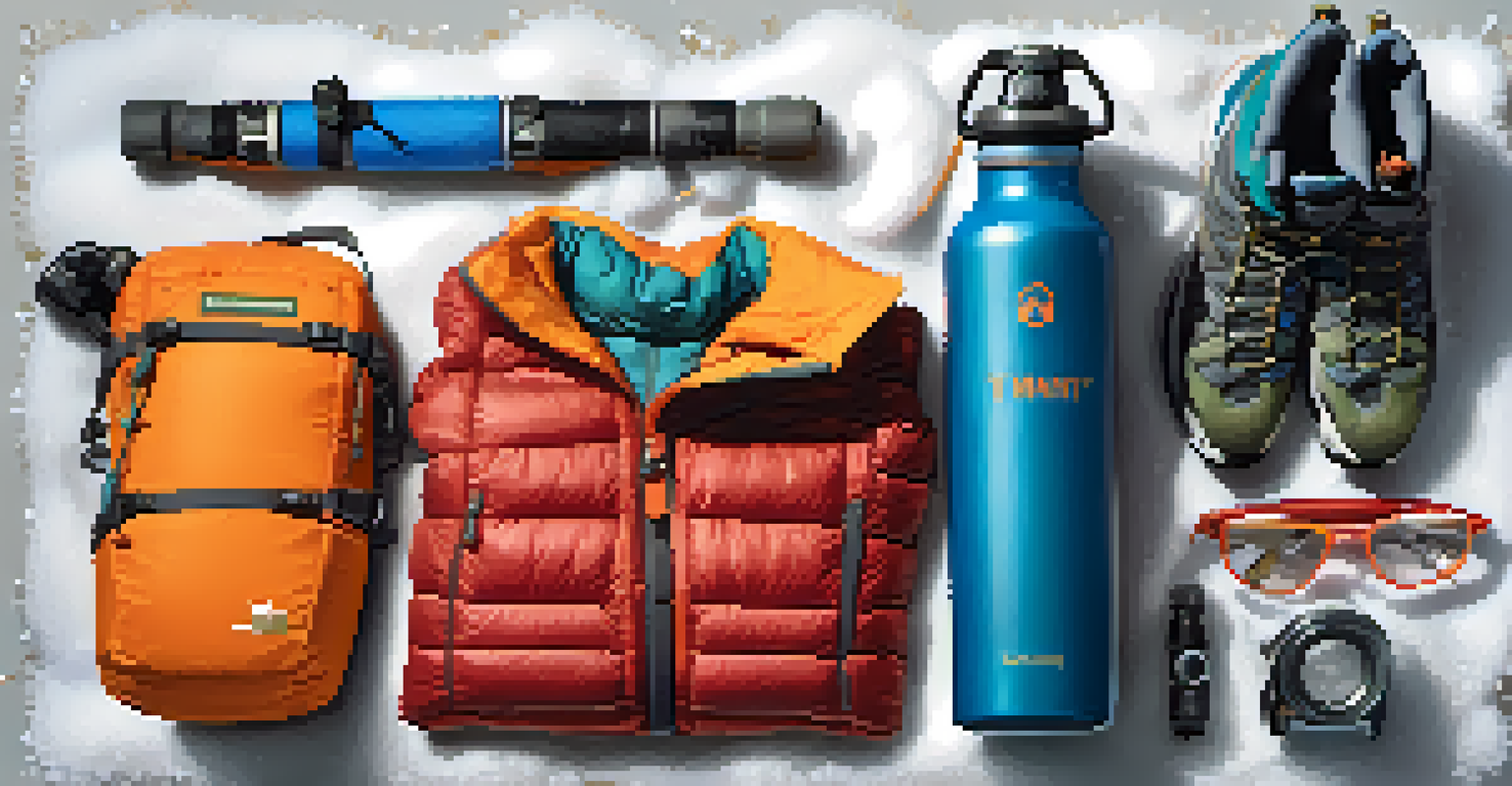Winter Hiking Safety Tips: Stay Safe in Big Bear Trails

Dress in Layers to Combat Cold Weather
When hiking in winter, dressing in layers is crucial. This approach allows you to regulate your body temperature effectively. Start with a moisture-wicking base layer to keep sweat away from your skin, add an insulating layer for warmth, and finish with a waterproof outer layer to shield against wind and snow.
There's no such thing as bad weather, only inappropriate clothing.
Remember, it’s easier to shed a layer than to warm up once you’re cold. A good rule of thumb is to dress as if it’s 20 degrees warmer than it actually is since you'll warm up as you hike. Don’t forget accessories like hats, gloves, and thermal socks to protect your extremities.
Also, choose appropriate footwear. Insulated, waterproof boots with good traction are essential to navigate snowy and icy trails. Prioritize comfort and warmth to enjoy your hike without distractions.
Check Weather Conditions Before You Go
Before you lace up your boots, always check the weather forecast. Winter weather can change quickly, and being caught in a snowstorm or freezing temperatures can turn a fun hike into a dangerous situation. Use reliable weather apps or websites to get updated conditions specific to Big Bear.

If severe weather is predicted, consider rescheduling your hike. It’s better to wait for a clearer day than to risk your safety. Keep in mind that temperatures can drop significantly in the mountains, so even if the forecast looks good, be prepared for sudden changes.
Check Weather Before Hiking
Always check the weather forecast to avoid dangerous conditions that can arise unexpectedly in winter.
Additionally, local ranger stations can provide insight on trail conditions, including snow depth and ice. Their expertise can help you choose a safer route suited for winter hiking.
Inform Someone of Your Hiking Plans
Always let someone know your hiking plans before heading out. This simple step is critical for your safety, especially in winter when trail conditions can be unpredictable. Share details such as your intended route and estimated return time with a friend or family member.
The mountains are calling and I must go.
In the event of an emergency, having someone aware of your plans can be life-saving. If you don’t return on time, they can alert authorities and provide vital information about your whereabouts.
Consider using a hiking app that allows you to share your location in real-time. This way, someone can track your progress and ensure you’re safe throughout your hike.
Pack Essential Gear for Winter Hiking
Packing the right gear is essential for a safe winter hike. Along with your layered clothing, make sure to bring essentials like a map, compass, and a first-aid kit. A headlamp or flashlight can also be invaluable if the daylight fades faster than expected.
Don’t forget to include extra food and water, as well as tools like trekking poles, which can provide stability on uneven, icy terrain. Snacks high in energy, like nuts or granola bars, are perfect for quick refueling breaks.
Stay Safe by Informing Others
Let someone know your hiking plans to ensure your safety in case of emergencies during your winter hike.
Consider packing snowshoes or microspikes if you plan to hike on snow-covered trails. These tools enhance your grip and help prevent slips and falls, making your hike safer and more enjoyable.
Stay Hydrated Even in Cold Weather
It’s easy to forget about hydration in winter, but it’s just as important as in warmer months. The cold can disguise feelings of thirst, leading to dehydration. Make a habit of drinking water regularly, even if you don’t feel particularly thirsty.
Carry an insulated water bottle to prevent your water from freezing. Alternatively, consider using a hydration reservoir with an insulated tube that keeps the water flowing even in chilly conditions.
Signs of dehydration can include fatigue, dizziness, and a dry mouth. By staying ahead of your hydration, you’ll maintain your energy levels and enjoy your hike to the fullest.
Know Your Limits and Turn Back if Necessary
It’s essential to know your physical limits, especially in winter conditions. Snow and ice can change the difficulty of a trail, making it more strenuous than expected. Pay attention to how your body feels and be prepared to turn back if you’re feeling overly fatigued or uncomfortable.
Don’t let the desire to complete a hike push you past your limits. It’s always better to cut your hike short than to risk injury or exhaustion. Listen to your body and prioritize your safety over reaching a destination.
Layer Up for Winter Hiking
Dressing in layers helps regulate body temperature and keeps you comfortable while hiking in cold weather.
If conditions worsen, such as unexpected snowfall or dropping temperatures, it’s wise to retreat. Safety should always come first, and trails will be there for you to explore another day.
Be Aware of Wildlife and Trail Etiquette
Winter hikes in Big Bear often mean encountering wildlife, and it’s important to respect their space. Keep a safe distance from animals you may spot, as they can be unpredictable, especially when food is scarce. Remember, you are a guest in their habitat.
Also, practice good trail etiquette by yielding to other hikers and skiers. If you’re hiking on shared trails, step aside to let others pass, and always follow the 'leave no trace' principles. This helps protect the environment and the experience for fellow outdoor enthusiasts.

Additionally, keep noise levels down to preserve the tranquility of nature and avoid startling wildlife. Being courteous on the trails enhances your experience and contributes to a safer, more enjoyable hike for everyone.